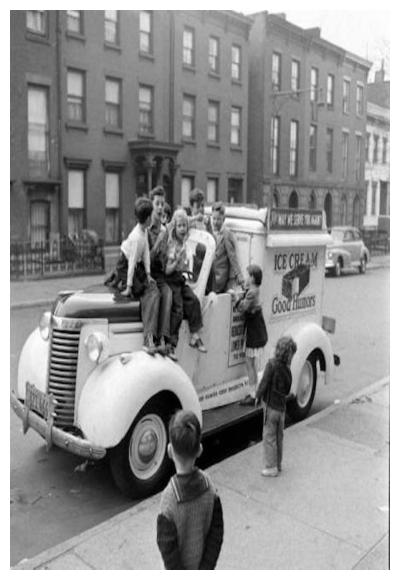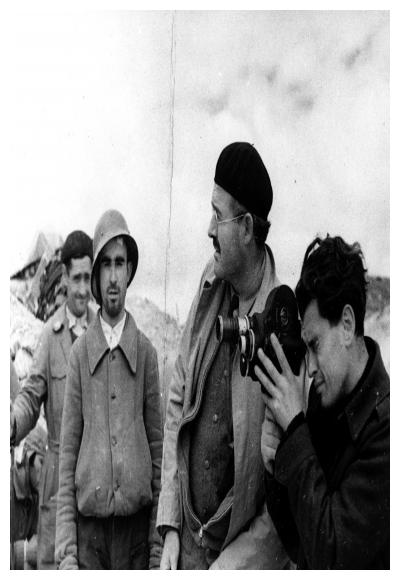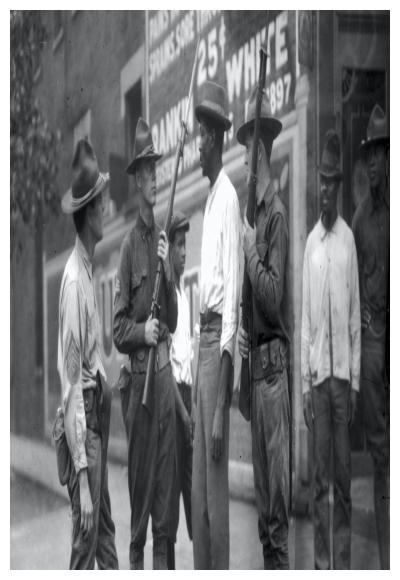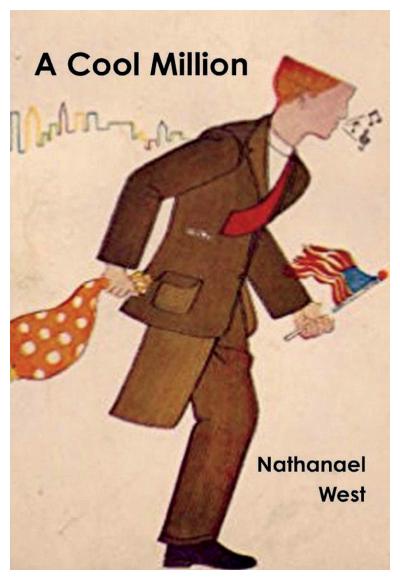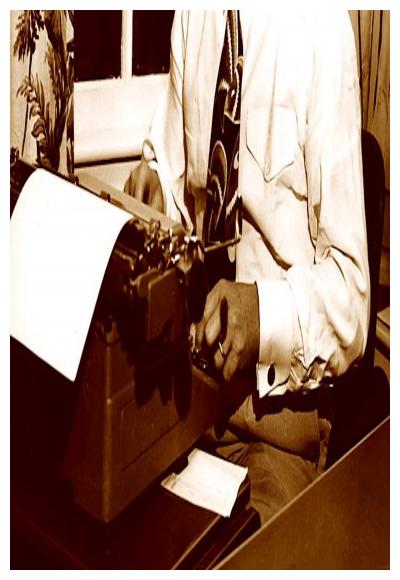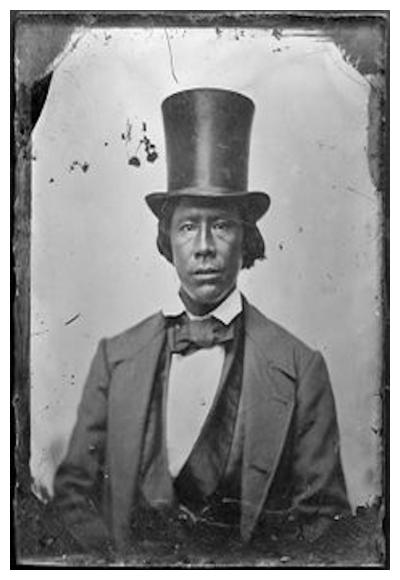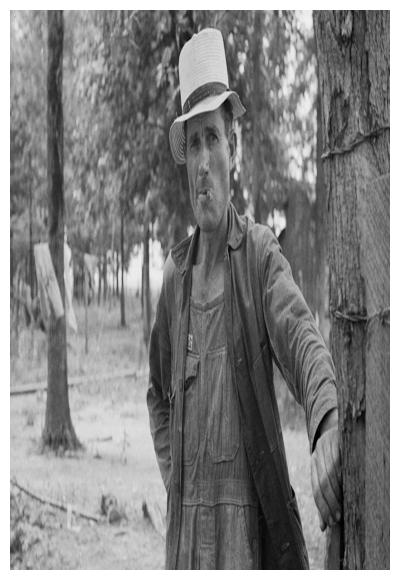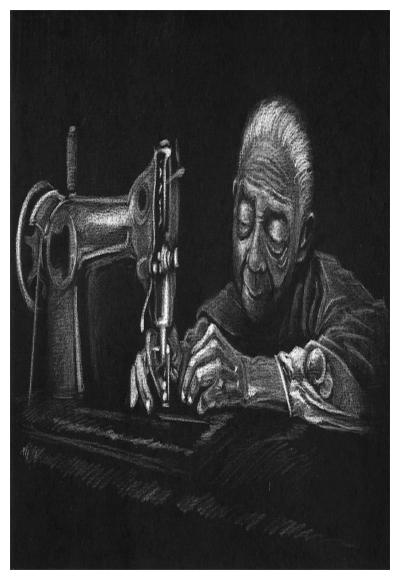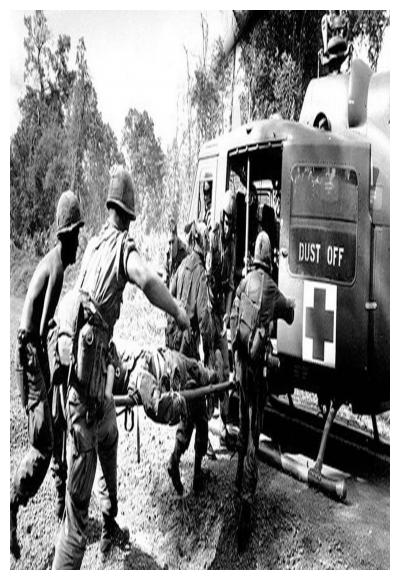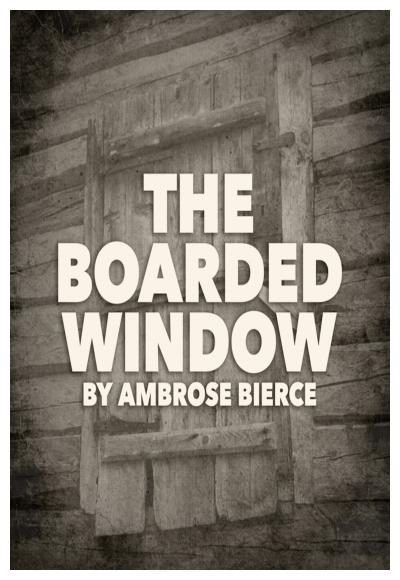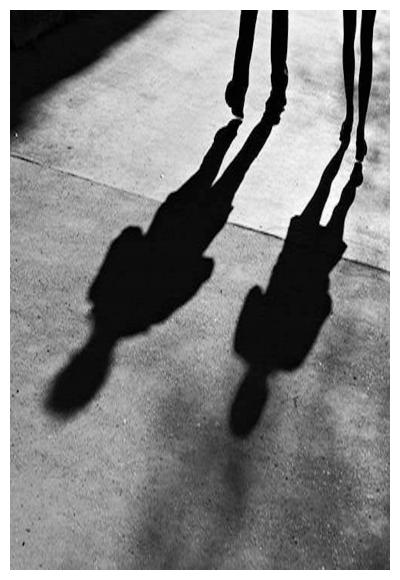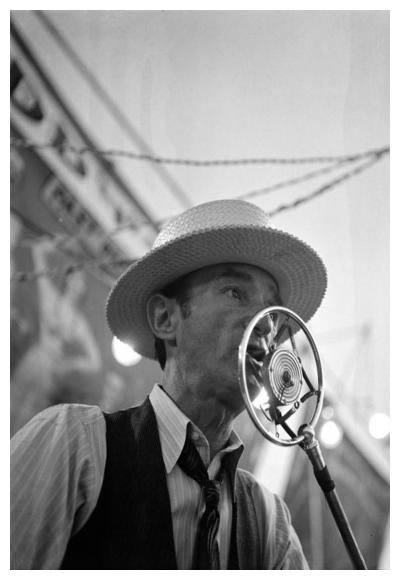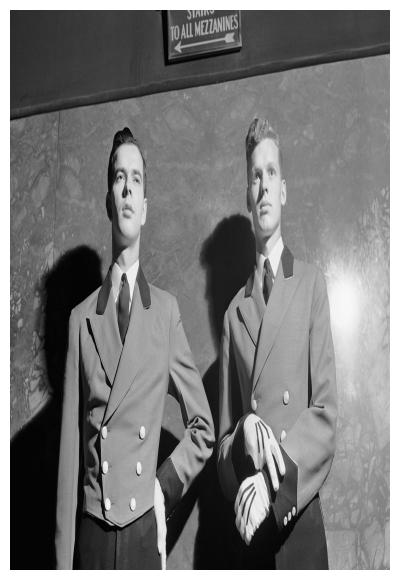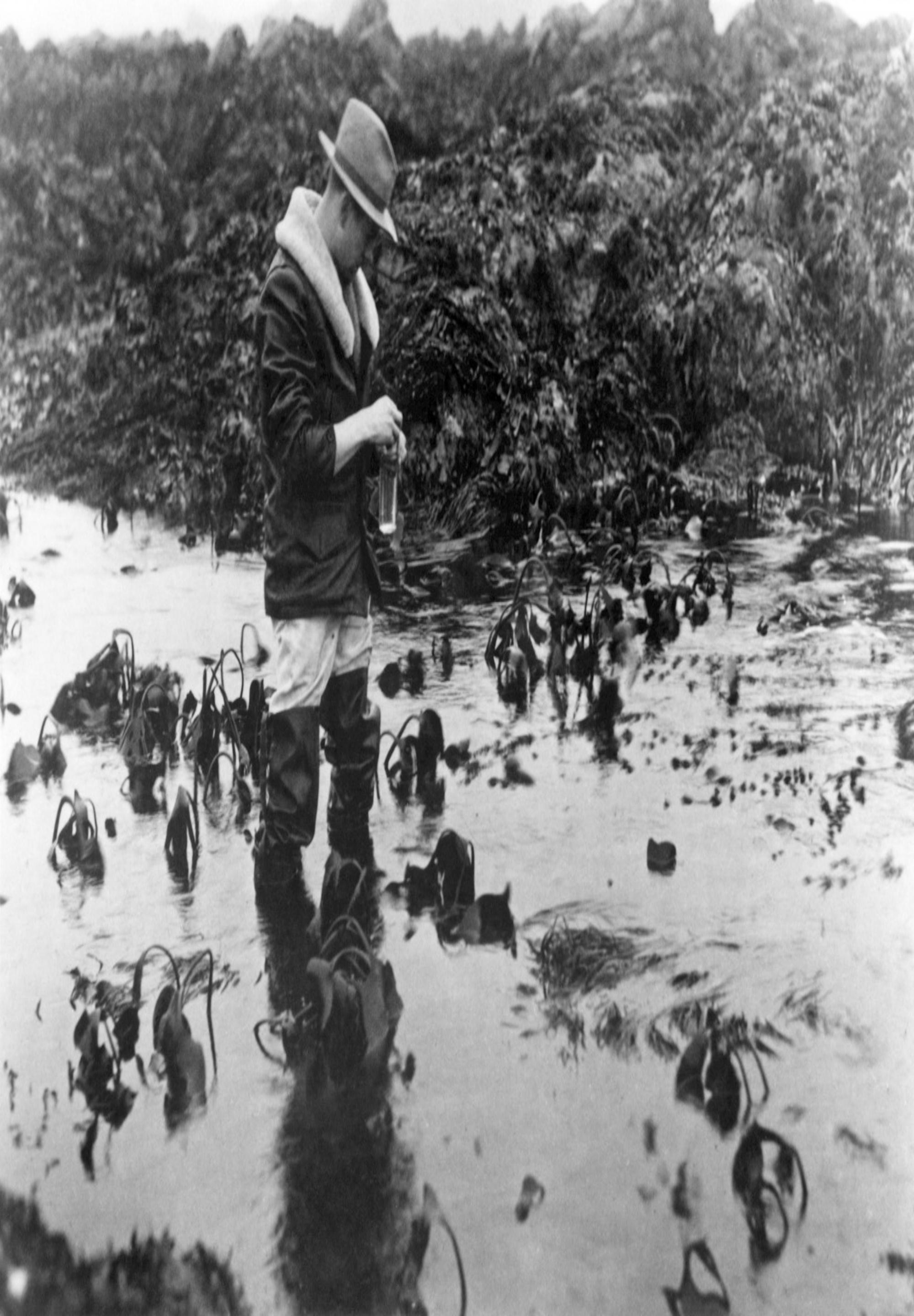
Synopsis/Details
Through the central character of Dr. Harry E. Teller, this screen adaptation of several Depression-era Steinbeck stories focuses on the subjects of the human animal, union with nature, animal rights, capital punishment, and marine biology—as well as on the drama of Teller’s psychological evolution.
In the first section of "Animals", Mary picks Dr. Harry E. Teller as her husband because she thinks the new garden will “like” him. The garden now in perfect shape, Harry finds Mary herself perfect—though untouchable. She does not care for his occupation, which she calls unfair: killing animals in the name of biological research. Mary routinely locks her husband out of her tiny bedroom on the garden: he tries the lock but leaves quietly. She refuses to let Harry have an Irish Terrier pup, since it might damage her garden. After a white quail visits the cement pond in the garden, Mary fears a predatory cat will come and asks Harry to put out poison fish. He refuses but will try to scare the cat away with his new air gun. The next morning, under ambiguous circumstances, Harry shoots and kills the white quail with the air gun, then tells Mary it was the cat he buried.
In the second section of this script, Dr. Harry E. Teller, the marine biologist (now divorced), brings a sack of starfish from a tide pool to his laboratory on Cannery Row in Monterey. The laboratory is filled with rattlesnakes, rats, and cats, and there are chickens in a coop on the porch out back. Harry euthanizes a cat for experimental purposes. Then a tall, lean woman arrives just as he begins timed work on the creation of a starfish embryo series. While she waits, Harry begins embalming the cat. The Woman wants to buy Harry’s male rattlesnake, which she agrees to board in his laboratory at her expense. Her snake-like behavior during the feeding of the snake annoys Harry and disrupts the starfish series—which is ruined. Nonetheless, Harry’s work will continue, on this and other projects. The Woman leaves and never comes back.
The third section of "Animals" continues to feature Dr. Harry E. Teller, who is no stranger to hard work and spends much of his time in the laboratory—working. Along with his productive lab research, Harry raises chickens on the side. Children love Harry and Harry loves children; often boys from the city of Monterey visit his laboratory. Most of all, the boys like poultry- killing time. Harry kills chickens to bring to market (for extra cash), and the youngsters love watching him work. Harry explains to them how to properly kill a chicken, but he never lets the youths do it themselves for fear they would make a mistake and the chicken would needlessly suffer.
In Part III, we learn that Dr. Harry E. Teller is a friend of the warden at San Quentin Prison, where Harry is often invited to watch an execution and act as a witness. He enjoys visiting his friend and observing the executions. Bert Munroe himself is still fairly new to Monterey, but, having heard about Harry Teller’s trips to watch prisoners being hanged, he asks Harry if he can join him on his next visit. Harry gets permission to have Bert join him, but the latter, having had some time to think about the matter, develops deep reservations about attending an execution. Bert finally decides he will not attend and speaks to Harry about his decision, saying that he is scared he wouldn’t be able to get the killing out of his head afterwards. Harry does not understand Bert's problem despite Bert's attempts to explain himself further. Upon reflection, even Harry later decides not to attend the upcoming execution, and curses Bert for making him feel self-conscious about witnessing such an event. Prior to his conversation with Bert Munroe, Harry had never conceived of anything odd or wrong about his attendance at executions.
In Part IV of "Animals", Dr. Harry E. Teller approaches the scene of a lynching right after it has taken place, and watches the crowd as it departs. A bartender has opened up his bar nearby in the belief that the members of the lynch mob would be thirsty, but only Harry comes in. Harry tells of the raid on the jail, the beating, the lynching, and the burning of the hanged man’s body—in none of which acts Harry participated directly. The bartender buys a swatch of the dead man’s pants from Harry—retrieved by the latter as a souvenir—to hang up behind the bar. The bartender then accompanies Harry on his walk back to his laboratory. Inside the lab, Harry’s neglected girlfriend, Betty, accuses him of having been with a woman. In the bathroom, Harry realizes that’s exactly how he feels about having been anywhere near a lynching.
After leaving his laboratory and Betty in Part V, Dr. Harry E. Teller is walking in the cold dawn on a country road when he sees a tent with a lighted camp-stove out front. A young woman is preparing coffee, biscuits, and bacon. A younger man and an older one (the girl’s husband and her father-in-law, respectively) come out from the tent. They ask Harry, who is warming his hands at the stove, to join them at breakfast. The men are cotton pickers and say they can try to get Harry a cotton-picking job, but he politely declines. They go to work after finishing breakfast and having a brief look at the baby in the back of the tent. Harry starts to leave but inquires first about the baby sleeping inside the tent, not making a sound. The young woman says the baby has died of fever—they took it to a doctor but they got there too late—and she now has to bury it somewhere. Harry says that he is sorry and departs.
In Part VI of "Animals", Dr. Harry E. Teller continues walking and comes upon the home of a wealthy woman named Helen Van Deventer. There he sees Dr. Palmer leaving after a visit and getting into his car. This is the same doctor who attempted to treat the campers’ baby, and who has just examined Hilda, Helen’s daughter. After Dr. Palmer departs, Harry is greeted by Hilda through the barred windows of her bedroom. Hilda tells Harry that people want her dead and are starving her in order to achieve their goal. Suspecting that the girl may be troubled, Harry goes to the front door of the house to make an inquiry, but he is rebuffed by a servant—under Helen’s orders.
Part VII of this screenplay features a sightseeing tour that winds through the Monterey Peninsula and the Carmel Valley, working its way along Seventeen-Mile Drive, over hills, and up onto a ridge. People from different positions in life all see the Valley as a place that promises something appealing, pleasant, and even profitable for them. A businessman looks at the land below and sees a fortune to be made in real estate. A young couple gazes down at the Valley and dares to think about the wonderful, peaceful life they could live there. A priest dreams of ministering to the good town folk who live below, and how about easy and rewarding it would be to live among them. An old man looks upon the Valley and envisions a place where he might simply sit and ponder his life’s decisions, so as to be able to make more sense of human existence. The tour-bus driver tells his passengers he sees a simple life of farming for himself, if he were able to live in the Valley. Dr. Harry E. Teller is one of the passengers on the bus. He takes this tour, alone and silently, as if he were seeing the Valley (and the world) for the very first time.
Toward the end of the seventh part of "Animals", the tour bus appears to hit and kill a dog that was trying to cross the road. Everyone gets off to see what happened, including the bus driver. Harry Teller remains aboard the bus, willfully looking away from his right-side window—the side on which the dog was purportedly struck. The bus driver may think that he has killed a dog, but he has not killed anything: he ran over a saddlebag, next to which lay an abandoned, beast-like baby. Harry retrieves the baby and later adopts the boy, calling him “Little Frog.”
As Part VIII reveals, by the time Little Frog is eight years old, he is as strong as a grown man but lacks intelligence. Mentally slow but gifted with the artistic ability to carve remarkably correct animals from sandstone, Little Frog works in Dr. Harry E. Teller’s marine-biology laboratory and does not attend school. But the town officials decide that the boy needs to attend school in town, despite Harry’s misgivings. Once Little Frog is enrolled in school, his artistic talent is quickly discovered and encouraged. One day, the boy is allowed to draw animals on the school blackboard to express his talent. When the teacher, Miss Martin, subsequently asks the class to erase the blackboard in preparation for the afternoon arithmetic lessons, Little Frog springs into action and attacks everyone with the strength of a man, even a madman.
After school, Miss Martin comes to the Dr. Harry E. Teller’s laboratory and tells him that she wants the boy to be whipped as punishment; Harry complies. Little Frog vacantly accepts his punishment and, the next day, unimpeded and unerased, he redecorates the entire schoolroom with animals as his classmates study. When Little Frog returns to the lab after school, he gives Harry a conciliatory letter (concerning life, death, consciousness, and legacy) from Miss Martin, which Harry reads aloud as Part VIII, the final section of "Animals", ends.
Story & Logistics
Story Type:
Hero's Journey
Story Situation:
Daring enterprise
Story Conclusion:
Ambiguous
Linear Structure:
Linear
Moral Affections:
Duty, Legality, Penitence, Probity
Cast Size:
Many
Locations:
Several
Special Effects:
Minor cgi
Characters
Lead Role Ages:
Male Middle Aged, Male under 13
Hero Type:
Anti-Hero
Villian Type:
Mother Nature
Stock Character Types:
Mad scientist
Advanced
Adaption:
Based on Existing Fiction
Subgenre:
Animal, Drama, Literary Adaption, Man vs Nature, Psychological
Subculture:
Bohemianism
Action Elements:
Physical Stunts
Equality & Diversity:
Diverse Cast
Life Topics:
Mid-life Crisis/Middle Age
Super Powers:
Physical or mental domination
Time Period:
Great Depression (1929 – World War II)
Country:
United States of America (USA)
Time of Year:
Autumn/Fall, Spring, Summer
Illness Topics:
Psychological
Relationship Topics:
Affinity, Emotions and feelings
Writer Style:
Dalton Trumbo, Horton Foote, James Agee

